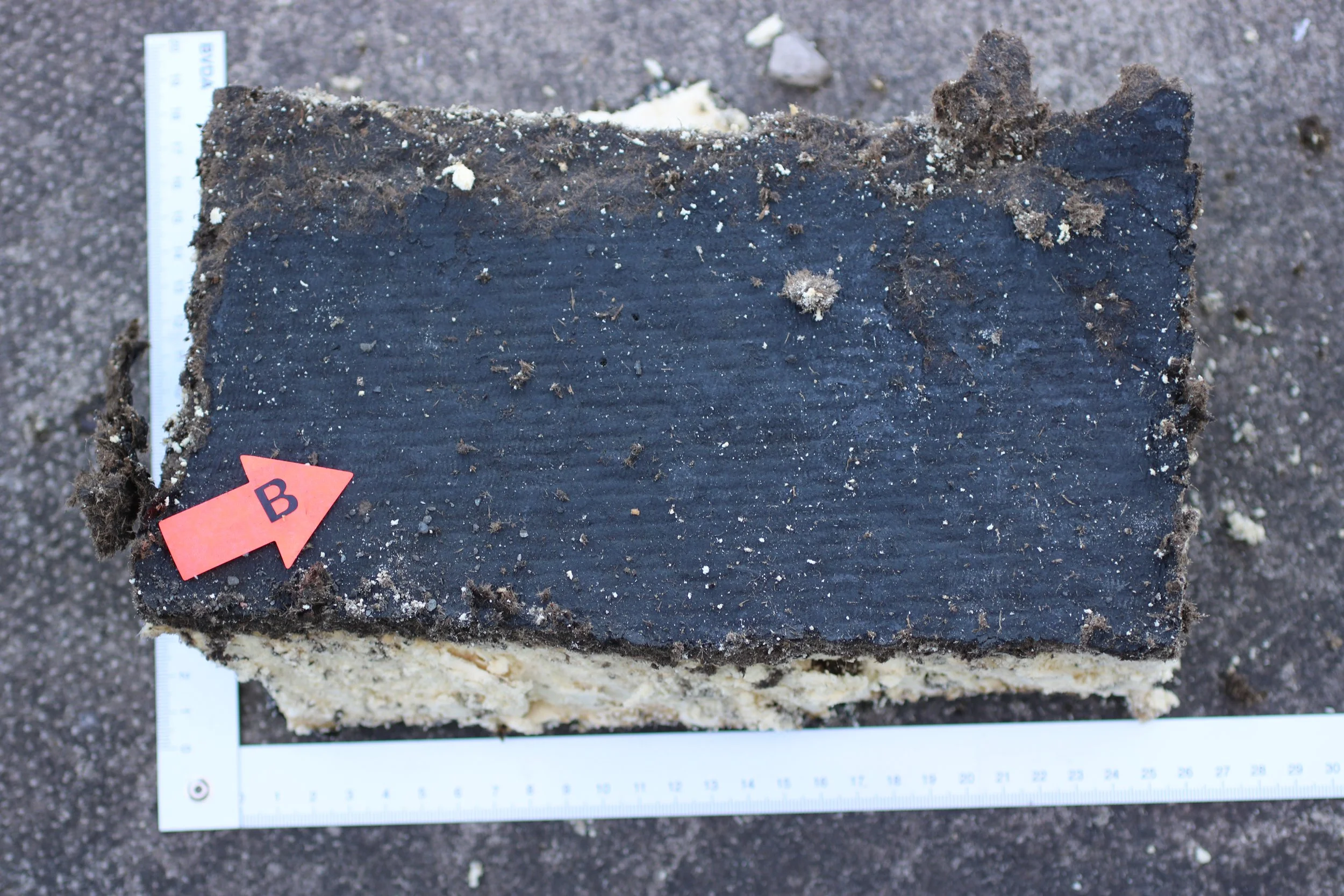Insulation Evaluation Part 1: Rigid Boards
What Happened?
Throughout my career, the evaluation of foam-type insulation has been perhaps my most common task. These rigid polyurethanes are frequently used in construction - hidden within the walls, floor, or roof, to keep the building warm. They typically come in one of two forms, either a rigid board which manufactured off-site and installed during construction, or a spray-injection form which is injected into the wall/roof/floor of an existing building. For this Case Study, we will focus on the board type insulation, and return to the spray injection type in a later case study.
Issues can arise with these insulation boards, often relating to water ingression, loss of insulating performance over time, or even the subsistence of floors. In the analysis of these boards, we use standardised test methods to evaluate the performance of these boards.
In one particular case, insulation boards 80 mm thick had been used externally in the roof of an apartment building. The insulation board was sat upon a vapour control layer, to prevent water entering the building, and sealed on top with torch-on felt. While no water could enter from the top, the sides had not been sealed correctly, and water slowly entered this closed system. The vapour control layer functioned correctly, and the water became trapped. The insulation board, sitting in the pooling water, slowly became more and more water logged.
I was tasked with evaluating the condition of this water logged insulation, and determine whether replacement of the insulation was required. I attended the site, and three samples of insulation were collected. When the roof felt was peeled back, and a sample of the insulation cut out, free-standing water was pooled in the bottom of the hole. It was clear that this insulation had been soaked for some time, and expectations were low. Nonetheless, my testing continued.
“ For this sample, as aged and water-soaked as it was, the average change in dimension was 6.3% - Still within the limit! ”


How did we analyse it?
The test I use most often is a “Dimensional Stability” test, to evaluate how mechanically stable the foam is. The insulation sample is measured along its length, width, and thickness, then exposed to an environment of elevated temperature and/or humidity for 48 hours. After conditioning back to room temperature, the dimensions are remeasured, and the change in the dimensions are calculated as a percentage of the original values. This test is performed in accordance with a recognised international test stanadard, I.S. E.N. 1604. It is primarily intended to be used for newly manufactured materials, but is still applicable to aged materials. The permitted change in a dimension will change from one product to another, depending on the performance specified by the manufacturer. A change of 8% is often used as the limit.
In this case however, the sample of insulation was soaked with water, and a dimensional stability test on a soaked sample would be inaccurate. I first had to dry out the sample first. In doing so, I was also able to measure the water content of the insulation sample. I simply weighed the sample, and placed it in a ventilated oven at 40 degrees Celcius. This temperature is high enough to dry out the sample, but low enough that it would not cause any changes that might affect the later dimensional stability tests. The sample was reweighed at regular intervals. Once the mass had stopped decreasing, after 4 days in the oven, I knew it was dry. I marked the sample with measurement guidelines as seen below, and the dimensional stability testing could begin, exposing the sample to a temperature of 70 Celcius for 48 hours.
What was the resolution?
The moisture content of the water-soaked insulation sample was the highest I have ever seen, at more than 110%! In other words, the mass of water contained within the sample was greater than the mass of the insulation itself. This suggests the foam is actually an open-cell foam, which could be confirmed through further analaysis using FTIR Spectroscopy.
But moisture content is just one side of the story, and the dimensional stability test had something else to say. The typical average limit for freshly made material is an 8% change in dimension. For this sample, as aged and water-soaked as it was, the average change in dimension was 6.3% - Still within the limit! After a long discussion with my clients and the owners, it was agreed that replacement of the insulation boards was not necessary at that time, on the provision that the free-standing water was removed.
Despite the intial poor outlook, my analysis found remaining life in the insulation. The area was resealed, new drainage was installed, and the area was heated to drive off residual moisture. A review is scheduled for 2028.
If you deal with insulation in any form, as an installer, facade inspector, or even as a homeowner, and require expert, science-supported, evidence-based Expert Opinion, be sure to Contact Us today!
